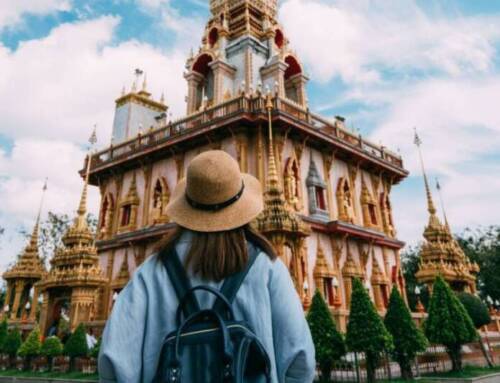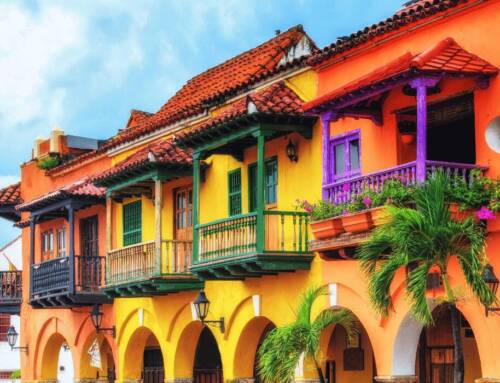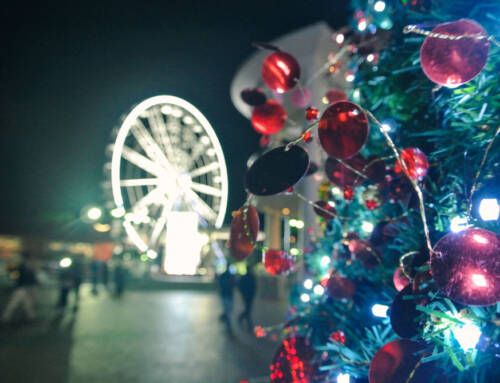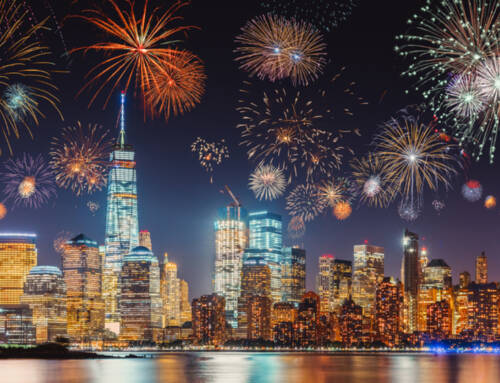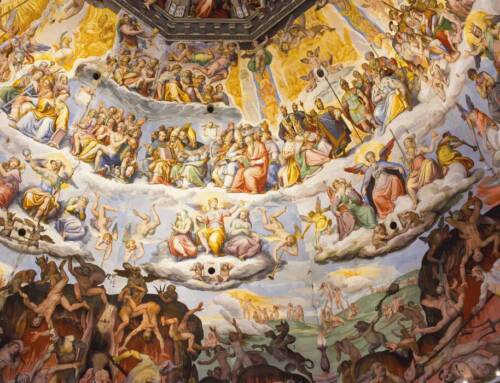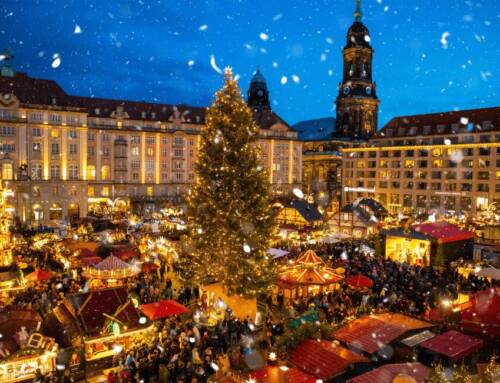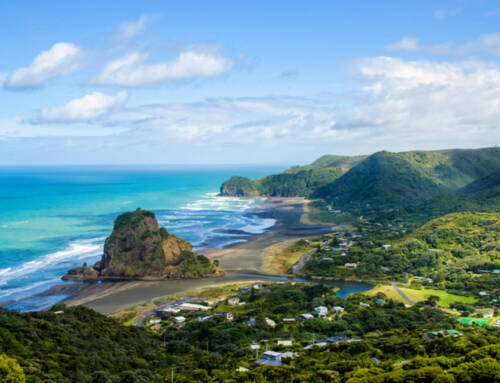With its distinctive S-shaped geography, resembling the form of a dragon, the “Land of the Blue Dragon” has something for every kind of traveler. If you’re wondering what to see in Vietnam, this article is for you.
It’s one of the most sought-after destinations, likely because its list of attractions is seemingly endless. Unique heritage, picture-perfect landscapes, idyllic beaches, and vibrant urban life. Vietnam stands out for offering something special for every type of traveler: a walk through the bustling streets of Hanoi for city lovers, pure nature in the lush green rice terraces of Sapa, the serene waters of Halong Bay, or the old-world charm of Hoi An.
Broadly speaking, Hanoi, Sapa, Halong Bay, Da Nang, Hoi An, and Ho Chi Minh are—moving from north to south—the country’s top tourist attractions and should be on your itinerary. When to visit Vietnam is a personal choice, as there’s really no bad time to travel to the country where everyone seems happy.
One thing to keep in mind, however, is the distances. Between the mountainous north and the southern beaches lie more than 1,500 kilometers and a variety of climates. In other words, it’s entirely possible to be sipping a cocktail on the beach in Phu Quoc while the rice terraces in Sapa are blanketed in snow.
If you’re planning a trip to Vietnam, this article covers the must-see spots you won’t want to miss. From its most chaotic cities to its dreamlike natural landscapes, this country has so much to offer. But before packing your bags, it’s important to make sure you’re aware of all the entry requirements.
Index
- When is the best time to visit Vietnam?
- What to see in Vietnam?
- Ho Chi Minh – The allure of old Saigon
- Halong Bay – A UNESCO World Heritage Site
- What to see in Vietnam: Hue – A journey to the former Capital
- A brief history of Hoi An
- Amanoi – A secluded retreat in Nha Trang
- Discover Vietnam with Heymondo Travel Insurance
When is the best time to visit Vietnam?
Despite the varying climates across the country and the fact that there’s always something to see in Vietnam year-round, the best time to visit is between April and June. During these months, the north is no longer cold, and the temperatures across the country are more pleasant—not oppressively hot and humid. Although Vietnam generally has a tropical climate, it’s always a good idea to bring a jacket, as it can still get cold in the north.
Bonus tip: If Sapa is on your itinerary, spring is the best time to visit to coincide with the blooming of flower fields. The Tết celebrations, marking Vietnamese New Year, usually take place in late January or early February. While the festivities are a lot of fun, traveling during this time can be tricky—flights and buses get booked weeks in advance, and many businesses shut down.
As for the beaches, the best time to visit places like Hoi An and Hue is from March to August. A little farther south in Nha Trang—one of the most beautiful natural spots—the weather is excellent all year round.
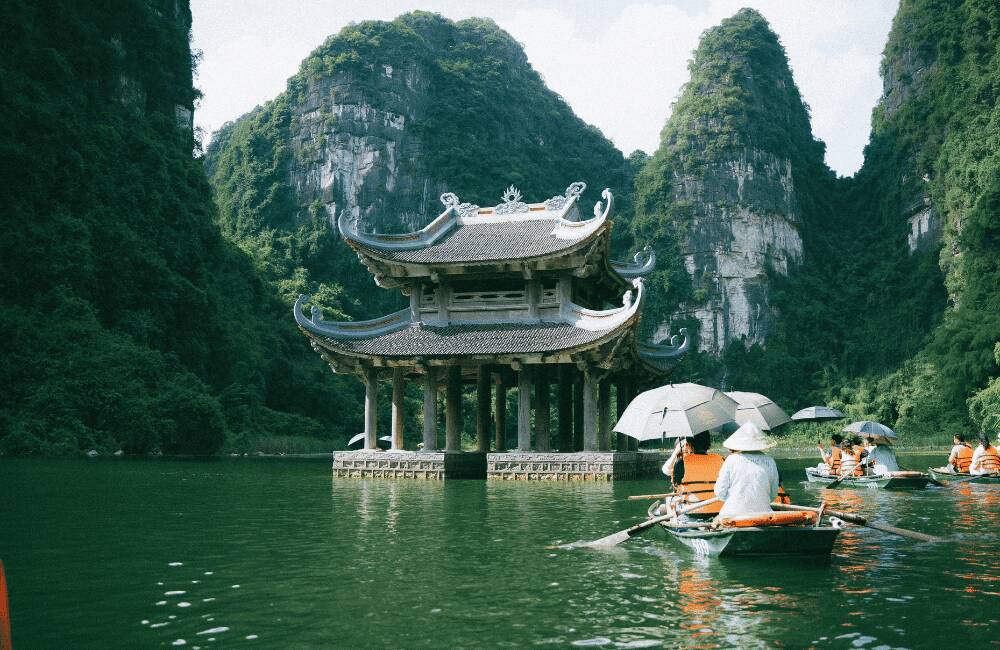
Rainy season in Vietnam
The rainy season in Vietnam can be a bit of a challenge. Though it officially runs from May to November, heavy storms can occur at any time. Typhoons also hit the country a couple of times each year.
Rains can cause flooding and disrupt transportation, especially in rural and coastal areas. Typhoons can strike hard between September and December, so it’s wise to keep an eye on weather forecasts.
For updated and detailed information on the weather and other travel recommendations, check your country’s official foreign travel advisory website.
What to see in Vietnam?
Hanoi – The capital and gateway to the country
Few places in the world offer the almost overwhelming splendor of Vietnam, and this magic is especially evident in its largest cities: Hanoi and Ho Chi Minh. This journey dives deep into the heart of one of Asia’s most radiant and resilient countries.
With more than 1,000 years of history, Hanoi is one of the oldest cities in Asia. A fascinating, highly appealing blend of East and West has made the capital not only a gateway into Vietnam but also a destination in its own right for urban tourism lovers. Bustling, chaotic, and steeped in history, Hanoi holds tightly to its past. You can feel it in the Old Quarter, where a stroll is a must (always watch out for the relentless traffic—traffic lights are more of a suggestion) or hop into a tuk-tuk.
Hanoi’s streets are full of life and energy, with a very recognizable soundtrack: speeding motorbikes and cars inching through traffic. Alongside them, street vendors stir pots and pans, offering noodle soups and grilled pork. It’s the city’s most iconic scene.
Entering Vietnam
Hanoi is an amazing place to see in Vietnam. It’s a perfect destination for a getaway any time of year, although April to June tends to bring more pleasant weather. It’s also the most common entry point into the country, so it’s worth keeping a few things in mind before landing. One of the most important things to note is that citizens of certain countries can travel to Vietnam for up to 45 days without a visa, depending on current visa exemption agreements.
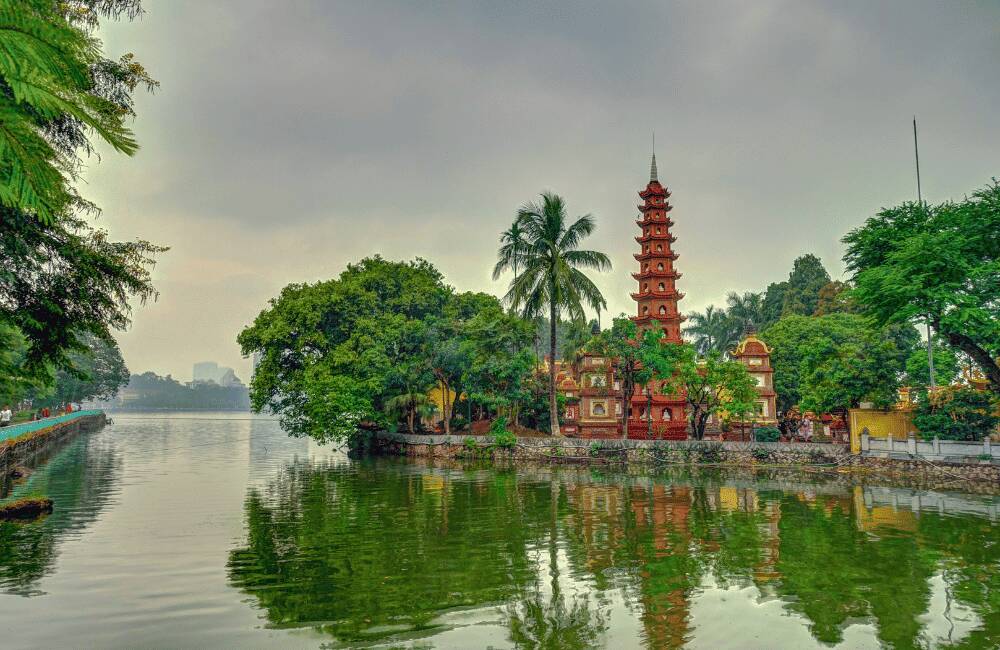
What to do and what to eat in Hanoi
A must-see stop is the famous Train Street—an iconic passage where the train tracks take up every inch, and when a train comes through, there’s barely a sliver of space between the cars and the house facades. The Old Quarter is a perfect place to get lost among lively night markets, lit by lanterns that create a picture-perfect Vietnamese postcard scene.
Street food in Hanoi
It happens throughout the city, but here in particular, you absolutely have to try the local street food. Dishes like pho—Vietnam’s most basic and iconic dish—are everywhere. It’s a soup found across the country, though it varies from place to place (in Hanoi, pho is a bit spicier and slightly more bland than the version in Saigon, for example).
And topping the local food charts is the delicious and ultra-popular banh mi. It’s a kind of sandwich that Vietnamese people eat every morning, but it’s perfect any time of day. Just like egg coffee (ca phe trung), which you absolutely can—and should—enjoy at any hour. It’s a sweet drink made with egg, condensed milk, and black coffee, originally created in the 1940s during a milk shortage in the city. It’s only for the brave!
Vietnam’s capital is a street food paradise. A maze of noisy streets absolutely packed with traffic, where suddenly—light, or rather, food—appears. Numerous vendors serve up spicy soups, glazed meats, and rice paper rolls stuffed with vegetables. Street food culture reigns supreme here, and both the Old Quarter and the Truc Bach area are perfect for sampling some of the most revered bites. Like the one that Barack Obama himself helped elevate to global fame at Bun Cha Huong Lien, enjoying the famous bun cha (grilled pork with noodles).
With your taste buds satisfied, there’s nothing better for the soul than soaking in a beautiful sunset at Tran Quoc Pagoda, while every shade in the color palette paints the sky. This is Hanoi’s golden hour.
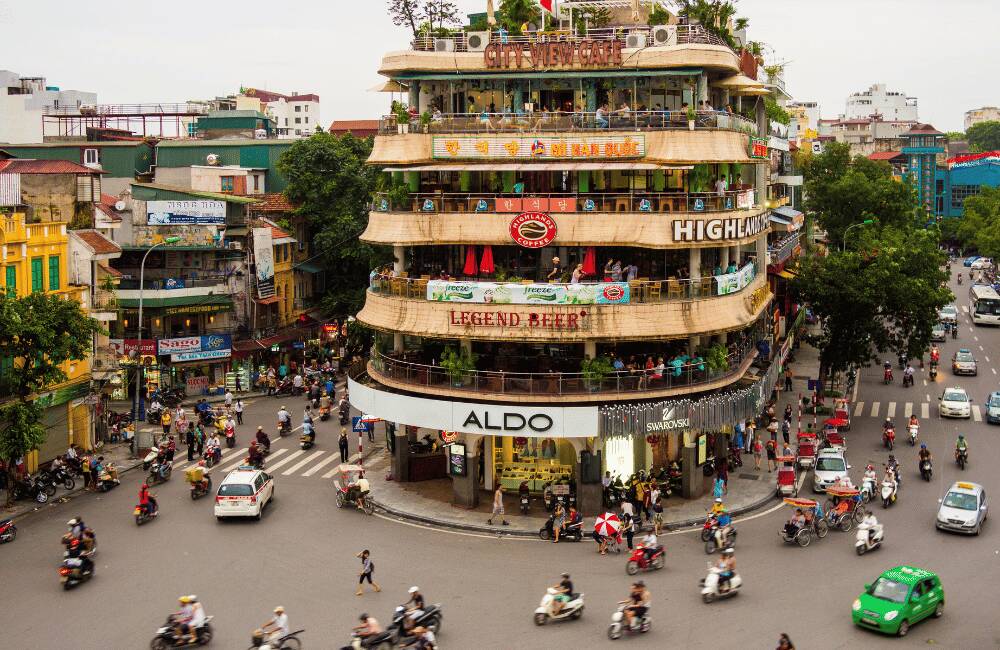
Top attractions in Hanoi
The Temple of Literature, founded in 1070 and dedicated to Confucius, is one of the oldest universities in Asia. The Ho Chi Minh Mausoleum and the Vietnam National Fine Arts Museum are also must-visit stops when exploring Vietnam.
It’s also worth catching a water puppet show, a traditional form of theater that dates back to the 11th century. For the full experience, visit the Thang Long Water Puppet Theater in the evening.
Ho Chi Minh – The allure of old Saigon
You’ll know someone’s local when they refer to Ho Chi Minh not as Ho Chi Minh, but as Saigon. It’s quite possibly the city where the contrast between old and new is most perfectly expressed. Founded by the French in the 17th century as a small trading post, it still bears a fabulous architectural legacy and boasts a more European-influenced lifestyle than its northern counterpart, Hanoi. The surprising juxtaposition of gleaming skyscrapers with centuries-old temples and pagodas makes this city full of contrasts, deserving at least a couple of days to explore.
There are two things that will always accompany you in Ho Chi Minh City: the ever-present humidity, no matter the hour, and the hunger stirred by the city’s street food, which is spicier and more flavorful than the cuisine in the north. But before diving into the food scene, it’s worth strolling through the modern face of the city, where the younger generations are building new businesses and bringing about change, all while honoring their cultural heritage.
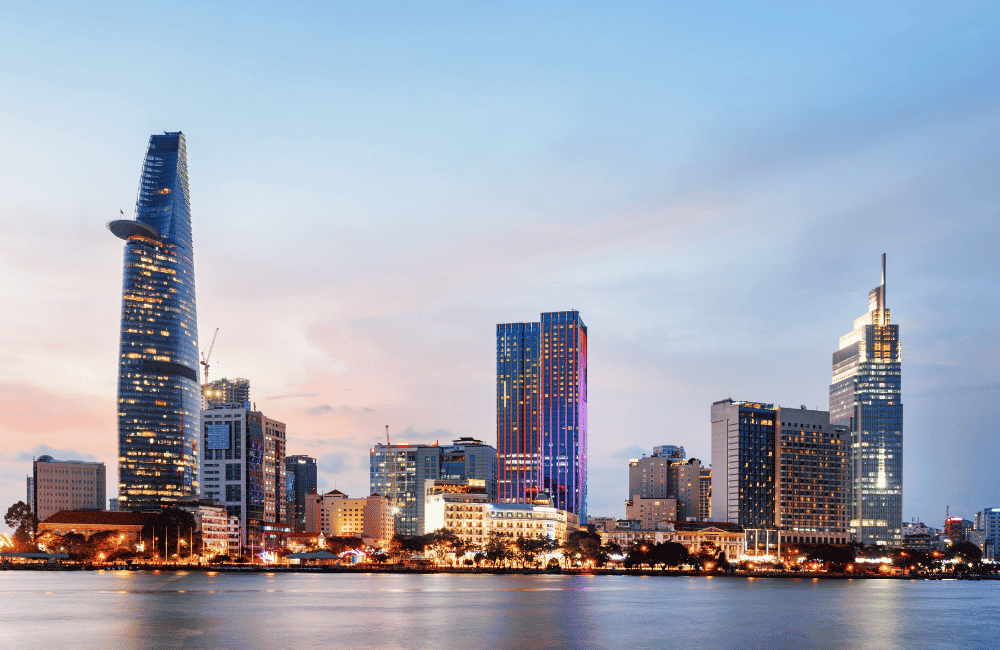
Must-sees in Saigon
One of the most powerful heritage sites is the Cu Chi Tunnels. Dug by the Viet Cong and located in the northern district, they offer a harrowing look into the Vietnam–U.S. war. This is not just any visit—it’s a humbling experience in a place where more than 45,000 Vietnamese men and women are said to have died defending the tunnels. Now protected by the Vietnamese government, this visit is without question a must-see in Vietnam. It’s not just a walk through history—it’s literally crawling through it, exploring some of the tunnels, seeing explosive traps, and even trying a typical soldier’s meal.
What to eat in Ho Chi Minh
Built in 1909 to honor the Jade Emperor, or King of Heaven, the Jade Emperor Pagoda is a beautiful temple in the heart of Ho Chi Minh City. Its intricate wooden decor makes it perfect for Instagram—every snapshot is a hit, much like the local dishes themselves.
Banh Cuon
Banh Cuon is a delicate rice sheet cooked to perfection and filled with a generous helping of minced pork, mushrooms, and onion. It’s served in small pieces and typically eaten for breakfast, with a splash of fish sauce (a staple in Vietnamese cooking), bean sprouts, and cucumber. And if street food is a must throughout Vietnam, then in Saigon, it’s absolutely essential. Top spots to try it include Banh Cuon Hai Nam or at 11A Đường Cao Thắng.
Banh Xeo
Another classic southern Vietnamese dish is banh xeo, a large savory crepe named for the sizzling sound it makes while cooking. It’s filled with equal parts pork, shrimp, and bean sprouts, typically served for breakfast or lunch—of course, with fish sauce. Where to try it: Banh Xeo 46A (featured in the Michelin Guide) and also at 11A Đường Cao Thắng.
Banh Trang Tron
A dish you won’t find outside of Ho Chi Minh City is Banh Trang Tron. It was created by street vendors on Van Kiep Street and Su Van Hanh Street. It’s a relatively small snack eaten in one bite—a mix of rice paper served like a salad with eggs (usually quail eggs), slices of mango, squid, basil, and mint. You can—and should—try it at the street stalls on Van Kiep or Su Van Hanh.
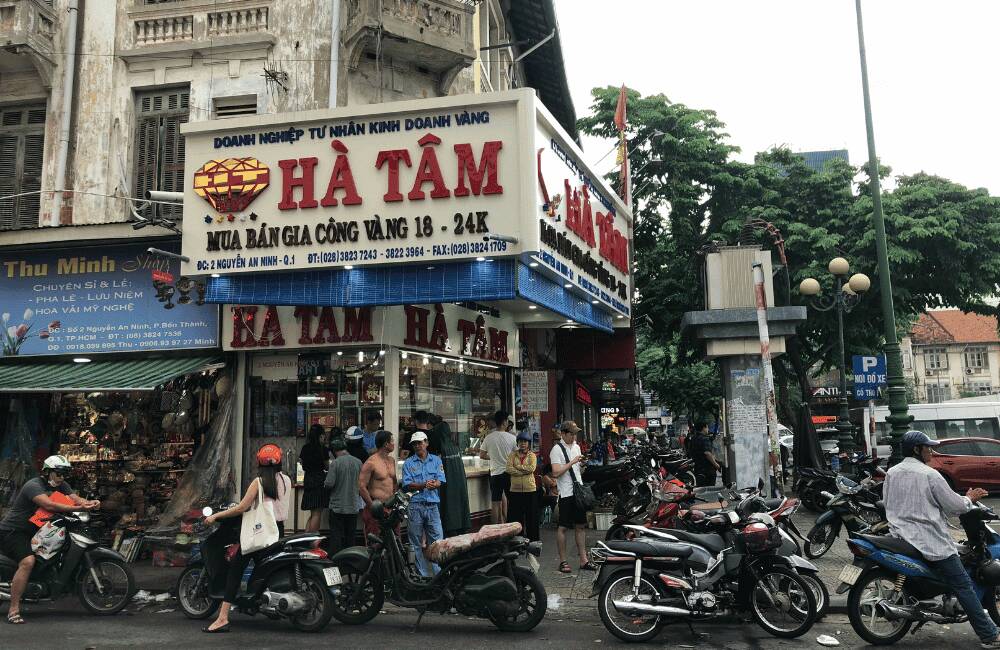
You’re also likely to find the best banh mi in Saigon at Banh Mi 37 Nguyen Trai, a tiny street stand on Nguyen Tai Street. The bread is freshly baked, and the filling—grilled sausage, thinly sliced pork, cucumbers, cilantro, and chili—overflows from the crusty loaf, making it almost impossible to close.
Most travelers to Vietnam follow a well-worn path between five iconic destinations: Hanoi, Halong Bay, Huế, Hoi An, and Ho Chi Minh City (Saigon). Even returning visitors rarely stray from the “H’s”—and for good reason. They’re all worth the visit and are connected by a convenient route from north to south, with quick flights or scenic train rides in between. Renting a car and traveling on your own is very difficult in Vietnam, so planes and trains are the most logical means of transportation.
Halong Bay – A UNESCO World Heritage Site
Declared a UNESCO World Heritage Site in 1994, Halong Bay boasts over 1,600 limestone islands and islets that form one of the most surreal landscapes imaginable. Due to its extraordinary beauty and geological value, it is not only one of Vietnam’s top destinations but also one of the most coveted travel spots worldwide.
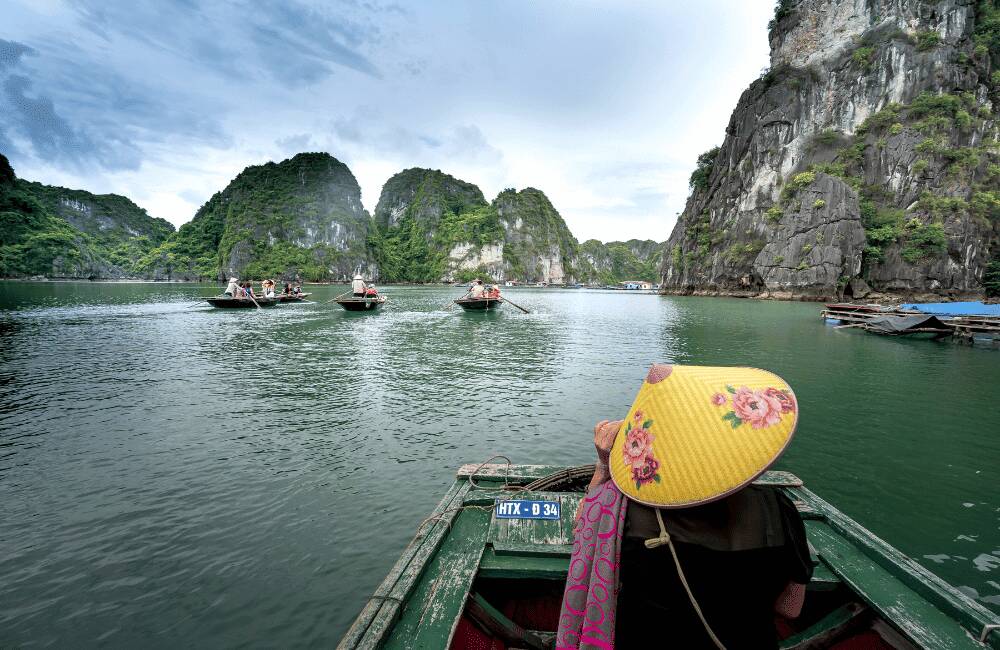
What to see in Vietnam: Halong Bay
One of the bay’s main tourist attractions is Sung Sot Cave, also known as the “Surprise Cave.” It features two vast chambers believed to have formed more than 20 million years ago, with stunning interior formations like stalactites and stalagmites. On a less earthly, yet equally fascinating note, the bay is also home to floating fishing villages. These communities have developed a unique way of life centered around fishing and pearl farming, passed down through generations.
The best—and nowadays almost the only—way to explore the bay is by cruise. There are numerous cruise lines offering services that range from basic (beware of the ultra-cheap options) to luxurious. Most depart from Tuan Chau or Hon Gai ports, with itineraries tailored to all preferences—from overnight stays to extended adventures that evoke the cinematic atmosphere of Indochine, where Catherine Deneuve witnesses the fall of the French colonial empire.
Activities like kayaking, fishing, sunrise tai chi classes, and Vietnamese cooking lessons are commonly offered aboard, for those who might—if it’s even possible—grow tired of admiring such a unique landscape. And since weather matters a great deal in Vietnam, the best time to visit Halong Bay is from March to October, ideally avoiding the summer months due to heavy rainfall.
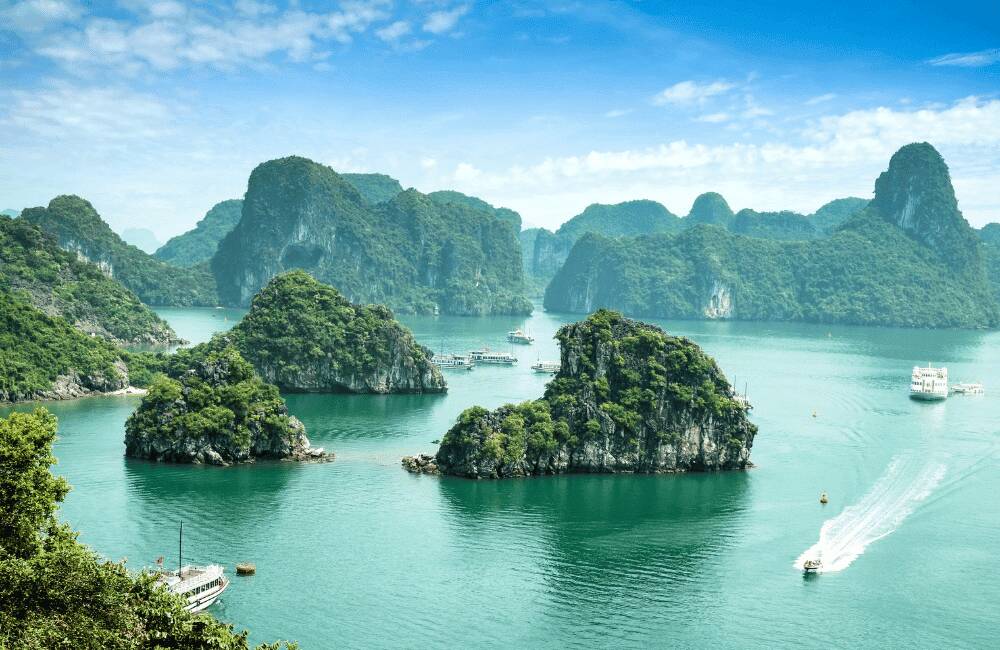
What to see in Vietnam: Hue – A journey to the former Capital
The former capital is an essential stop in Vietnam. It’s the perfect destination for a couple of days surrounded by culture, history, and a mystical atmosphere that envelops travelers at every turn. Hue is home to one of Vietnam’s few UNESCO World Heritage Sites: the Imperial City. Surrounded by moats, dotted with pagodas and mausoleums, this “masterpiece of urban poetry,” as described by a UNESCO official, offers much more than historical landmarks and museum pieces.
Located on the banks of the Perfume River, the city has awakened from the slumber of the past and now features art galleries, boutiques from young designers, and, of course, a delicious culinary scene.
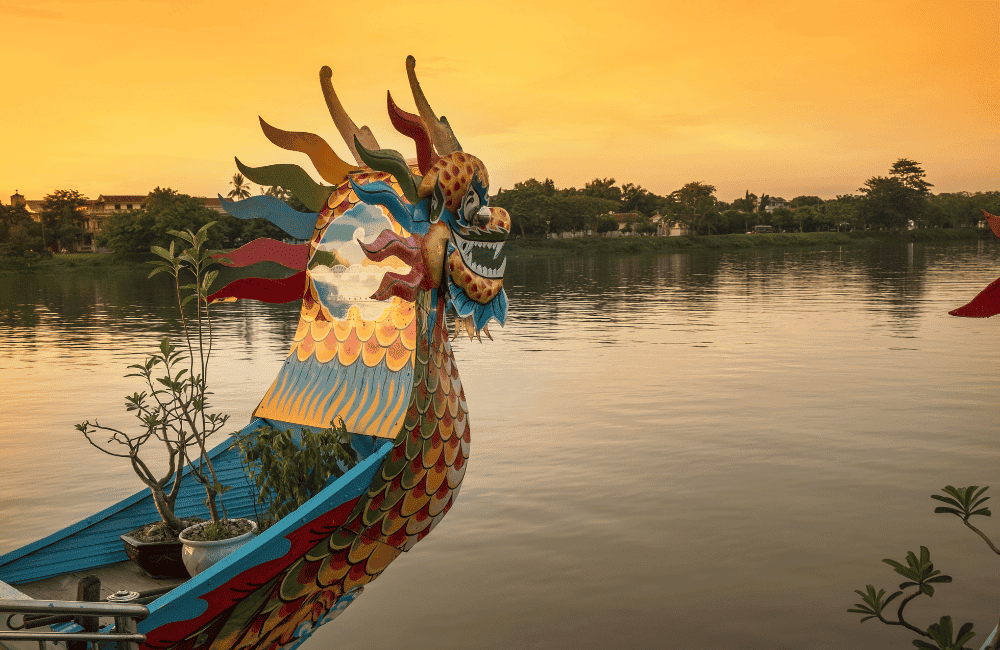
What to see in Hue
Diving into Hue’s historical past, the Thien Mu Pagoda is arguably the city’s most famous monument and even considered a symbol of Hue. The surrounding gardens are a pleasant place for a stroll, especially in the late afternoon when street vendors set up as the sunset creates a postcard-worthy display of color.
There’s also something you don’t see but can deeply feel: Imperial Music (Ca Hue). Recognized as Intangible Cultural Heritage by UNESCO, it originates from the imperial court and is known for its grace and elegance. It is performed not only during special events but also in everyday life.
What to do in Hue
Something that might seem daring in Hanoi or Saigon is actually highly recommended in Hue: renting a bicycle to explore the city. Hue’s iconic yellow bikes with baskets are easy to rent for tourists and can be picked up and dropped off at different locations throughout the city. One of the best cycling routes is from Thien Mu Pagoda to Truong Tien Bridge.
An architectural curiosity in Hue is its beautiful garden houses, an important part of the city’s cultural heritage. These homes feature restored interiors and spacious gardens well worth visiting. One of the most stunning—though it’s hard to choose—is An Hien Garden House, where the tour concludes with a delightful tea service in the garden.
And while it’s not a historical monument per se, it nearly qualifies: the Azerai La Residence hotel is a destination in its own right. Located by the river, this colonial-inspired mansion in Art Deco style, built in the 1930s, has long been Hue’s most sophisticated address—and it still is.
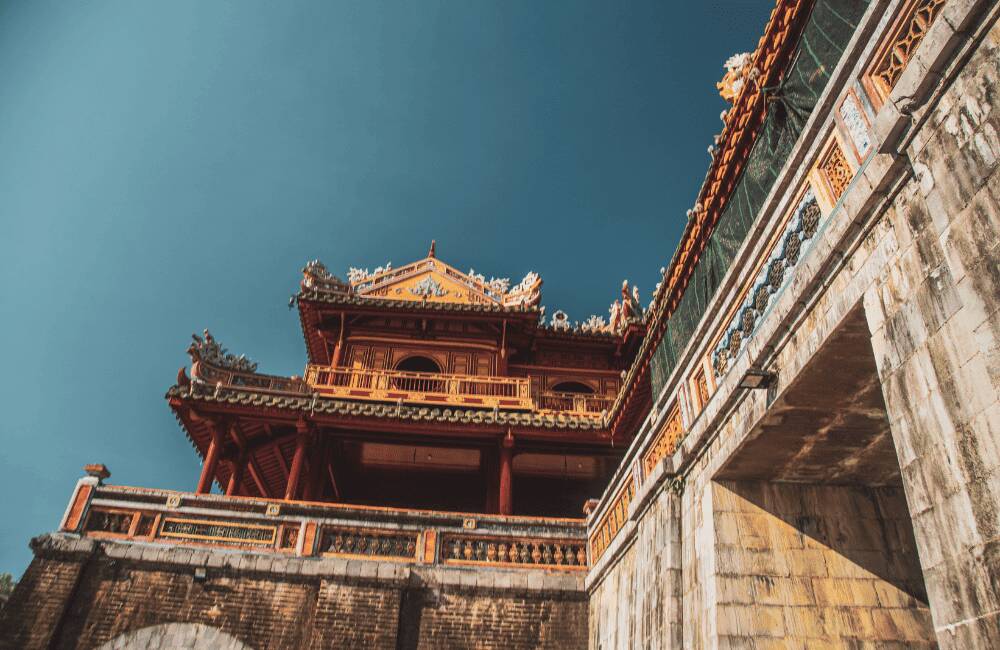
What to eat in Hue
Like elsewhere in Vietnam, Hue’s street food is known for its excellence. It also offers a great opportunity to connect with locals. For example, you can join them for breakfast at Hanh, where the menu features dishes like spring rolls. Another local favorite is banh beo, a rice cake topped with shrimp that’s incredibly popular in Hue. You’ll also find other classic Vietnamese dishes accompanied by a variety of tasty sauces—including, of course, fish sauce.
At Memoire Café, you’ll find what is arguably the best traditional Vietnamese coffee in Hue, served alongside sweet (and savory) snacks, and best of all, with stunning views of the river.
A brief history of Hoi An
A captivating mix of cultures flows through Hoi An, located in central Vietnam along the Thu Bon River. It’s truly a journey back in time. Known as Faifo between the 15th and 18th centuries, Hoi An was once a thriving commercial hub. Chinese and Japanese merchants settled here for months at a time, driven south by the monsoon winds. Inevitably, both communities left their mark on the city.
Hoi An’s decline began in the late 19th century when the river connecting the city to the sea became too shallow for navigation due to sediment build-up. As trade dwindled, so did the city’s prominence. Today, however, Hoi An stands proudly as one of Vietnam’s most charming tourist destinations. Its architecture is a kaleidoscope of diverse influences, brought to life in over 800 buildings, including French colonial houses, Chinese residences, pagodas, shops, and traditional homes, earning it a spot on the UNESCO World Heritage list.
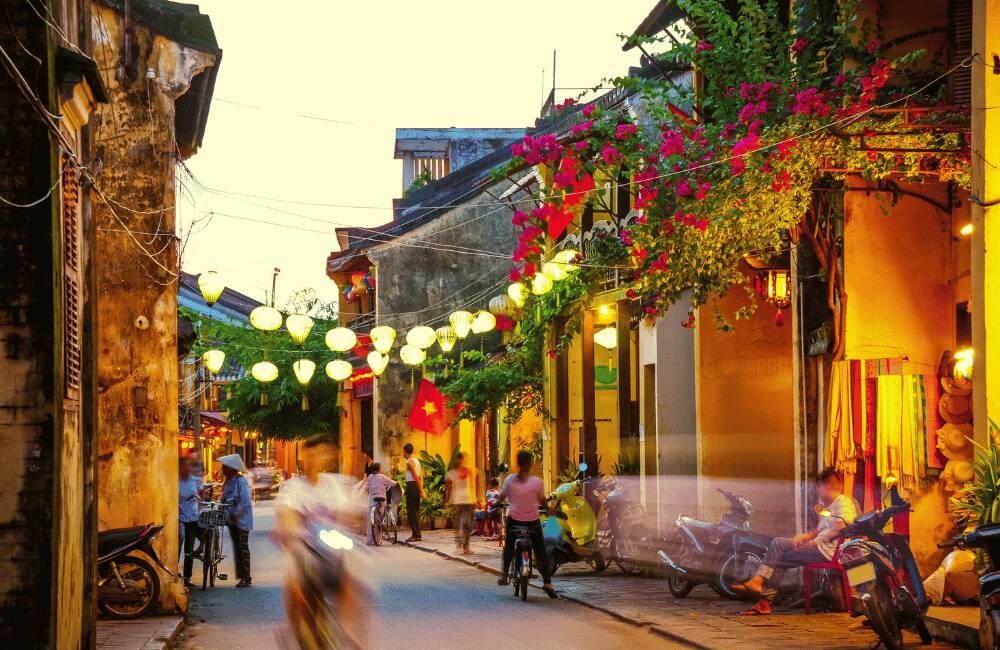
Amanoi – A secluded retreat in Nha Trang
A luxurious haven awaits on Vietnam’s southeast coast, in a setting as breathtaking as the eyes can handle. Here, the rooms resemble pagodas that blend perfectly into a lush green landscape. Most offer stunning views of the sea, thanks to the hotel’s elevated perch on a cliff.
Amanoi, the debut property in Vietnam for the luxury brand Aman, was designed by Jean-Michel Gathy. Its mission is to promote serenity, mindful living, and a deeply respectful approach to tourism and the surrounding environment.
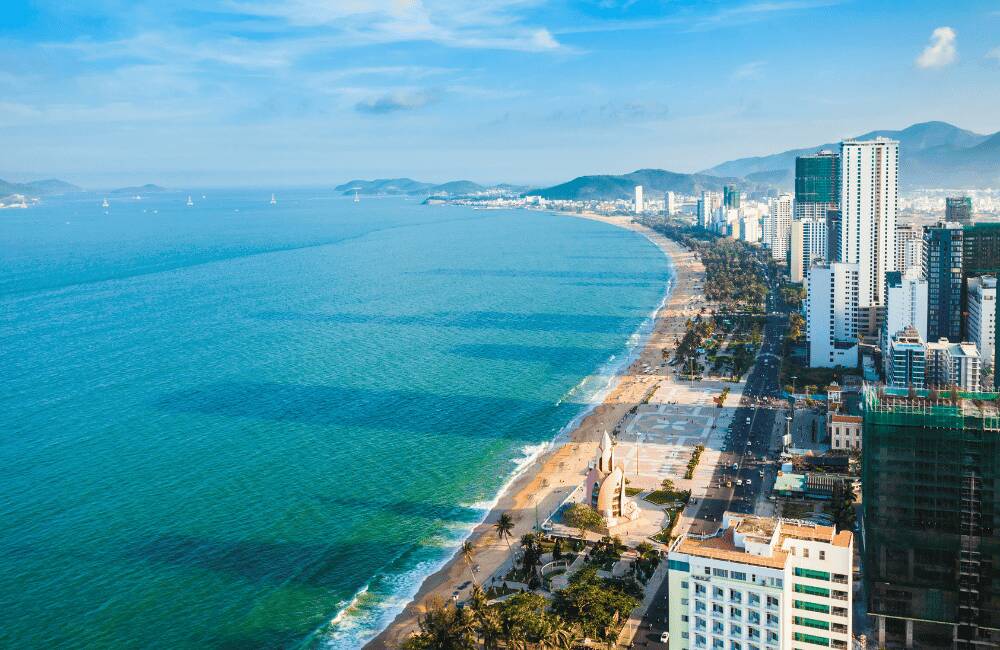
What to see in Nha Trang
Derived from the Sanskrit words for “peace” and “place,” Amanoi is no ordinary hotel. For starters, the journey to its rugged coastal location in Ninh Thuan Province, in southern Vietnam, is quite the challenge. It takes about 75 minutes by car from Cam Ranh Airport, located on Nha Trang’s tourist-friendly coast. And that’s where the magic begins: the property feels worlds away, surrounded by miles of untamed wilderness. In fact, the hotel is nestled within Nui Chua National Park, whose coastline meets the South China Sea. The park spans a variety of ecosystems, from dry tropical forests to the lush cliffs of Vinh Hy Bay, a marine reserve that can leave even the most skeptical traveler speechless.
Exploring Nui Chua National Park is not only possible—it’s highly recommended. But if you’re feeling tired or lazy, you can always do it on an electric bike around the area. An hour’s drive away, you’ll find the Po Nagar Cham Towers, a temple complex built between the 7th and 12th centuries that still stands strong with impressive architectural remains. About 90 minutes by car, you can visit Bau Truc, one of the oldest pottery villages in Southeast Asia. And at a similar distance, the village of My Nghiep offers an authentic journey through the ancient art of brocade weaving, all at unbeatable prices.
Discover Vietnam with Heymondo Travel Insurance
Vietnam is a fascinating destination where history, culture, and nature come together in an unforgettable experience. From the ancient temples of Hanoi to the dramatic landscapes of Halong Bay, the vibrant energy of Ho Chi Minh City, and the terraced rice fields of Sapa, every corner of the country offers something truly special. However, while Vietnam is a generally safe place to visit, to fully enjoy your trip without worry, having solid travel insurance is essential.
It is strongly recommended to purchase travel insurance with extensive medical coverage before traveling. In the event of illness or an accident, medical assistance abroad can be costly, and governments typically do not assume responsibility if you are uninsured. In this regard, Heymondo is an excellent choice, offering comprehensive coverage of up to €10,000,000 in medical assistance, including specialized care, diagnostic tests, surgeries, and medication. It also includes coverage for repatriation and early return due to an accident, illness, or death.
One of Heymondo’s greatest advantages is access to a mobile app with 24/7 medical chat support. Through this app, you can speak to a doctor in real time and get immediate assistance, right from your phone. And for even greater peace of mind while planning your trip, you can also add trip cancellation coverage, which lets you cancel your plans for medically justified reasons.Traveling to Vietnam is an unforgettable experience—and with Heymondo, you can enjoy it with complete peace of mind.
Featured stories

